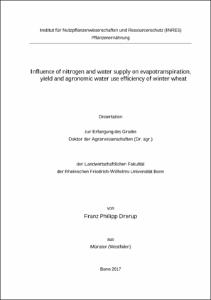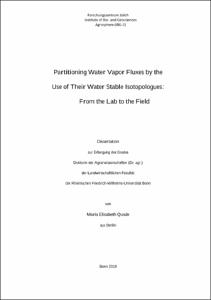The impacts of piped water on water quality, sanitation, hygiene and health in rural households of north-western Bangladesha quasi-experimental analysis

The impacts of piped water on water quality, sanitation, hygiene and health in rural households of north-western Bangladesh
a quasi-experimental analysis

| dc.contributor.author | Hasan, Mohammad Monirul | |
| dc.contributor.author | Gerber, Nicolas | |
| dc.date.accessioned | 2024-09-17T07:09:48Z | |
| dc.date.available | 2024-09-17T07:09:48Z | |
| dc.date.issued | 07.2016 | |
| dc.identifier.uri | https://hdl.handle.net/20.500.11811/12160 | |
| dc.description.abstract | We investigated the impacts of piped water on water quality, sanitation, hygiene and health outcomes in marginalized rural households of north-western Bangladesh using a quasi-experimental analysis. A government organization – the Barindra Multipurpose Development Authority (BMDA) – established a piped water network to provide these rural households with improved water as they have poor access to potable water. Using propensity score matching, the study compares a treatment and a control group of households to identify gains in water-sanitation, hygiene and health outcomes. We found that the BMDA piped water infrastructure had a positive impact on access to improved water and significantly reduced the distance traveled for and time spent on collecting drinking water. However, we found no improvement in the drinking water quality, which was measured by the extent of fecal contamination (E. coli count per 100 ml of water) at the point of use. The hygiene status of food utensils also did not show any improvement; food utensils were tested positive for E. coli in both the control and treatment group. Although access to BMDA piped water in the premises involves cost, it didn’t improve hygiene behavior: handwashing with soap after defecation and before feeding children. The treated households own larger water containers which implies that the intervention has had a clear impact on the quantity of water used for household purposes. However, we did not find evidence of health benefits, such as decreased diarrhea incidence of in under-five children, improved child anthropometrics stunting, underweight and wasting of children due to piped water use. | en |
| dc.format.extent | 51 | |
| dc.language.iso | eng | |
| dc.relation.ispartofseries | ZEF-Discussion Papers on Development Policy ; 217 | |
| dc.rights | In Copyright | |
| dc.rights.uri | http://rightsstatements.org/vocab/InC/1.0/ | |
| dc.subject | Child diarrhea | |
| dc.subject | Child growth | |
| dc.subject | Piped water supply | |
| dc.subject | Water-Sanitation | |
| dc.subject | Hygiene | |
| dc.subject | Irrigation agriculture | |
| dc.subject | Propensity Score Matching | |
| dc.subject | water quality | |
| dc.subject | food utensil hygiene | |
| dc.subject.ddc | 300 Sozialwissenschaften, Soziologie, Anthropologie | |
| dc.subject.ddc | 320 Politik | |
| dc.subject.ddc | 330 Wirtschaft | |
| dc.title | The impacts of piped water on water quality, sanitation, hygiene and health in rural households of north-western Bangladesh | |
| dc.title.alternative | a quasi-experimental analysis | |
| dc.type | Arbeitspapier | |
| dc.publisher.name | Center for Development Research (ZEF), University of Bonn | |
| dc.publisher.location | Bonn | |
| dc.rights.accessRights | openAccess | |
| dc.relation.eissn | 1436-9931 | |
| dc.relation.url | https://www.zef.de/fileadmin/user_upload/zef_dp_217.pdf | |
| ulbbn.pubtype | Zweitveröffentlichung | |
| dc.version | publishedVersion |







